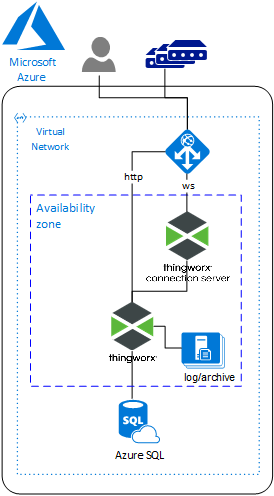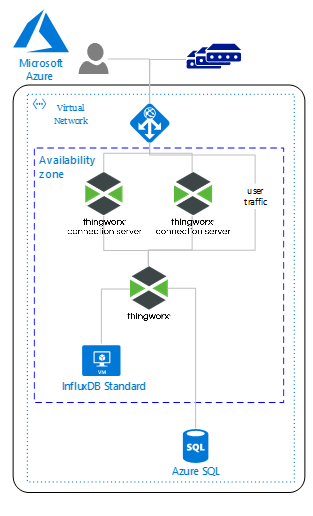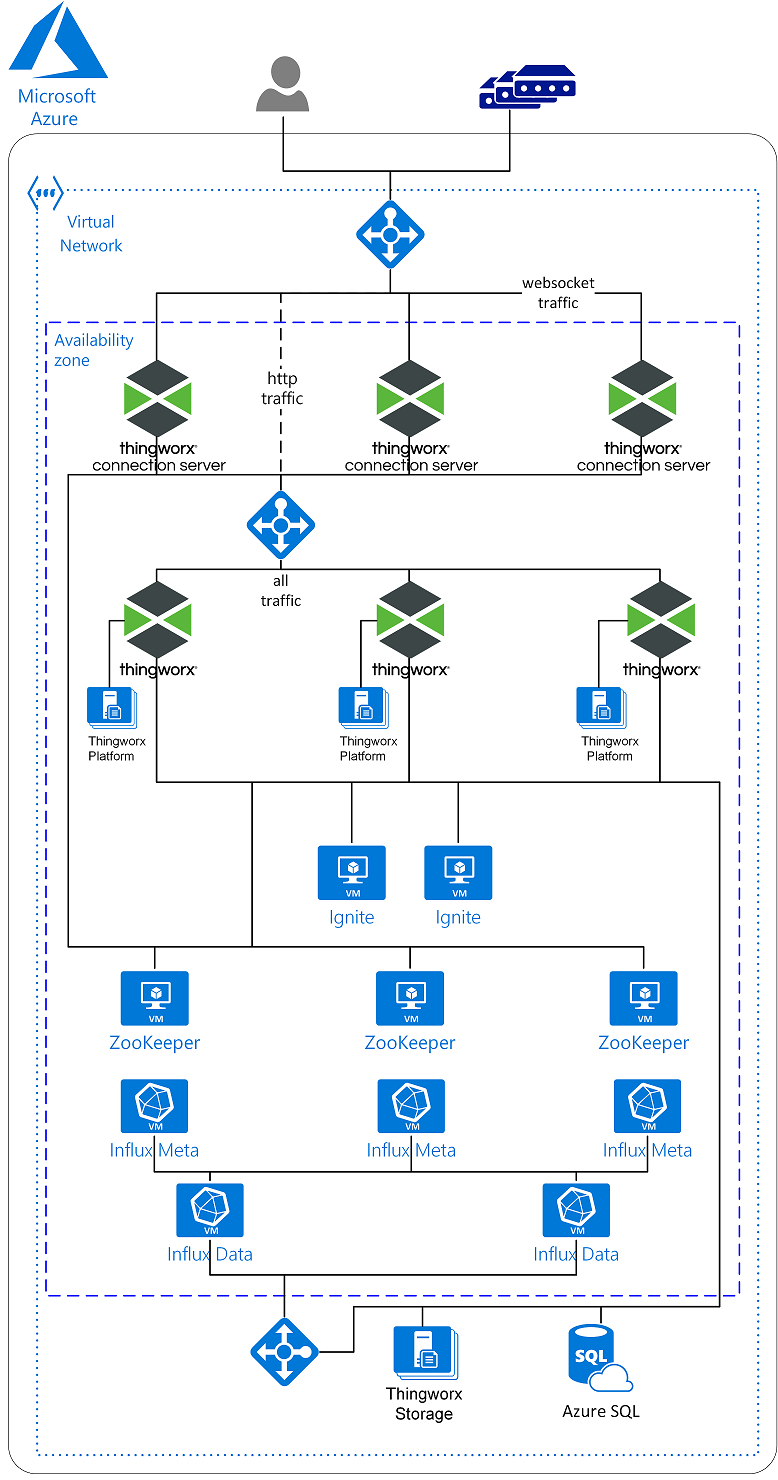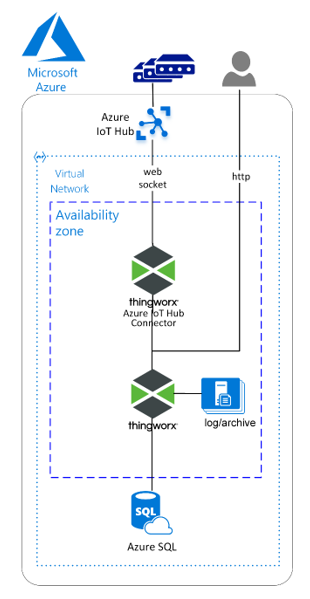Standard Deployment: ThingWorx Foundation on Azure
ThingWorx can be deployed in cloud platforms, such as Microsoft Azure. Many Azure services are available to help with deploying ThingWorx and managing it over time.
Azure Components and Services
• Regions - Geographic areas where Azure resources are physically located.
• Availability Zones - Isolated locations within a region. Each region contains multiple availability zones to support high availability deployments.
• Availability Sets - Separated (but not isolated) resources within an availability zone.
• Virtual Network - Used for configuring logical network topology, defining sub networks, configuring routing tables, and assigning private IP ranges.
• VM instances - Virtual machines used within Azure. They host key software components of the ThingWorx platform, such as ThingWorx Connection Server (if needed), ThingWorx platform (main application), Ignite and ZooKeeper.
• Application Gateways - Distribute incoming application traffic across multiple VM instances. It enables you to achieve fault tolerance in your applications, providing the required amount of load balancing capacity needed to route application traffic.
• Azure Databases - Azure SQL Database is the recommended option for ThingWorx. It offers single instances as well as highly available and fault-tolerant deployments.
• Azure Files - Provides file storage systems that can be shared and accessed by multiple virtual machines.
• Azure IoT Hub - A managed service to enable bi-directional communication between IoT Devices and Azure.
Reference Architectures
Production Deployment

List of Components | Number of Components |
|---|---|
Azure Region | 1 |
Azure Virtual Network | 1 |
Azure Application Gateway | 1 |
ThingWorx Connection Server | 1 |
ThingWorx Foundation Server | 1 |
Azure File Storage | 1 |
Azure SQL Database | 1 |
Large Production Deployment (non-HA)

List of Components | Number of Components |
|---|---|
Azure Region | 1 |
Azure Virtual Network | 1 |
Azure Availability Zones | 1 |
Application Gateway | 1 |
ThingWorx Connection Server | 2 |
ThingWorx Foundation Server | 1 |
Azure SQL | 1 |
InfluxDB (single node) | 1 |
ThingWorx Production Cluster

List of Components | Number of Components |
|---|---|
Azure Region | 1 |
Azure Virtual Network | 1 |
Azure Availability Zones | 1 |
Azure Application Gateway | 2 or 3 instances: • Route device traffic to Connection Servers. • Route user traffic to Foundation nodes. • Route traffic to InfluxDB Enterprise data nodes. |
ThingWorx Connection Server | Minimum of 2. 3 pictured. |
ThingWorx Foundation Server | Minimum of 2. 3 pictured. |
Ignite | Two options: • Embedded within Foundation processes. • 2 or more separate nodes (depends on HA requirements). |
Azure Files | 3: • One for each Foundation server to store and archive logs. • One shared ThingWorx Storage repository for Foundation nodes. |
ZooKeeper | Minimum of 3. Should be in odd-numbered allotments. |
InfluxDB Enterprise | 5 (or more): • 3 Meta nodes • 2 or more Data Nodes, with total count evenly divisible by replication factor. |
Azure SQL Database | 1 |
ThingWorx Azure IoT Hub Connector Deployment

List of Components | Number of Components |
|---|---|
Azure Region | 1 |
Azure Virtual Network | 1 |
Azure Availability Zones | 1 |
ThingWorx Azure IoT Hub Connector | Minimum of 1 |
ThingWorx Foundation Server | 1 |
Azure Files | 1. Store and archive logs. |
Azure SQL Database | 1 |